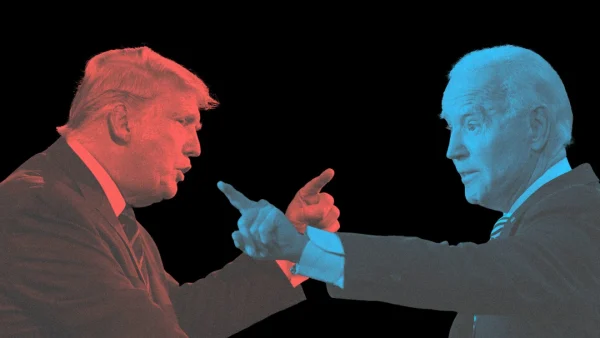The True Cost of In-Person Learning
We can safely say that we successfully made it through a semester of hybrid instruction at Saint Louis University. For some, in-person teaching was a huge blessing. There’s something to be said about the quality of in-person learning versus online learning. In addition, togetherness (with social distancing!) promotes both social and emotional wellbeing. What we must all bear in mind, however, is the reason why SLU was forced to decide between remote learning and in-person instruction in the first place.
COVID-19 has claimed the lives of over 500,000 Americans. While the number of daily newly diagnosed cases in the U.S. has plummeted since it peaked on Jan. 8, we are not out of the woods yet. Vulnerable segments of the American population continue to become infected with COVID-19, and some even die because of it. As many begin to let their guard down and start to gather unsafely, we are in imminent danger of propagating the virus once again.
SLU is an outlier in the way it’s been able to semi-successfully manage the spread of COVID-19 among its campus population. During the fall 2020 semester, SLU had a total of 544 positive cases among students. Of these, 435 were diagnostic (people who had symptoms and sought out a test to determine if they had been infected), while 109 were surveillance (people who were randomly tested for the virus and ultimately tested positive despite being asymptomatic). While the positivity rate (the number of confirmed positive cases divided by the total number of tests administered) remained low enough to justify in-person instruction in the eyes of the university, it’s important to examine the ethical quandaries at play with regards to in-person learning while in the midst of a pandemic.
First, one must consider the potential negative effects of encouraging a campus population as large as SLU’s to come together while a disease as contagious and deadly as COVID-19 ravages communities across the globe. To date, the city of St. Louis has had 19,730 positive cases and has conducted almost 232,000 tests. This translates to an all-time positivity rate of 9.4 percent. Tragically, at the time of this writing, 412 members of the St. Louis City community have lost their lives to the coronavirus.
As students, it can be easy for us to forget that we live in the middle of a busy city. Many of us spend our time almost exclusively on-campus or just off of it in nearby apartment buildings. What this pandemic has highlighted, however, is just how connected we are to the St. Louis community at large. Hundreds of faculty and staff members travel to and from campus on a daily basis, but some interact more closely with students than others. For example, the staff of Grand dining hall are almost constantly breathing the same air as the thousands of students that depend on them for their meals. These people almost certainly earn less than their paper-pushing counterparts in the administration, yet they are the ones on the front line of this pandemic. After their shift, they return home to their families. Some may have brought the coronavirus with them. Of those who did, some probably spread it to members of their families and communities. Of those who contracted the virus, a few may even have died because of it.
All of this is not to say that there were no positive benefits to having in-person instruction at SLU. After all, many hundreds of people likely would have lost their jobs had the administration decided to keep students home again this year (and to his credit, Dr. Pestello publicly prioritized keeping as many people on the SLU payroll as possible in an April 2020 email). But would those firings have been justified had SLU decided to do exclusively remote learning? SLU continues to invest millions of dollars in building state-of-the-art facilities across campus and has raised the cost of tuition consistently since I first arrived in 2017, yet seems to have been totally financially blindsided by the arrival of the pandemic. In an email sent on May 4, 2020, Dr. Pestello predicted that SLU would ultimately end fiscal year 2020 with a deficit of $20 million. Further, for fiscal year 2021 (which began last July), the president predicted a deficit of at least $20 million dollars if the university did not receive residential income and if enrollment decreased.
Clearly, finances were a major factor at play when the university decided to bring students back to campus this year. Had they not, their budget situation would have been even more dire than it is now. One would think, however, that a university with a $1.3 billion endowment would be more prepared for emergency situations that might drastically reduce their revenue (admittedly, in that same April 2020 email, Pestello explained that much of the endowment was tied up in the stock market, which bottomed out when the pandemic first struck). This unpreparedness ultimately put the university in the position of having to decide between cutting employees to prioritize public health and bringing students back to prioritize balancing the budget. They chose the latter.
The costs and benefits of in-person instruction in a pandemic are numerous and vary in their importance. While the university has successfully maintained a low positivity rate for the first half of the academic year, it still bears direct responsibility for the COVID-19 cases that have spread from the student body to the St. Louis community at large. Individual responsibility is essential in a pandemic, and it must still be practiced among every member of the campus community. But the university knew that it wouldn’t be able to control the actions of every student when they opted to hold in-person instruction this year. If their financial safety net had been stronger, or perhaps their administrative budget cuts more severe, they wouldn’t have had to choose between promoting public health by holding classes entirely online and the economic well-being of its staff by holding classes in-person.
In having to pick between these two, the administration was stuck in a truly difficult situation. If I had been in President Pestello’s position in the spring of 2020, I might have decided to bring students back to campus to keep as many people employed as possible. While the university should have been more prepared for an emergency situation such as the COVID-19 pandemic, we are living in a reality where it was not.
As we continue to take class in-person, I ask that everyone remember the unseen consequences of this pandemic. Carriers of COVID-19 might not even know that they have the virus. As a result, even a simple sanitary slip-up could get someone seriously ill. The St. Louis community is vibrant and alive, if a bit quiet because of the times we live in. Every life is precious, and to cut one short because of carelessness is simultaneously tragic and sinister. Students, staff, faculty and administrators all have a role to play in finally ending this pandemic. Let’s start acting like it.
Your donation will support the student journalists of Saint Louis University. Your contribution will help us cover our annual website hosting costs.











Billikenfan • Mar 1, 2021 at 11:23 am
Unsurprisingly, another short-sighted op-ed. Do you really expect any university to be financially prepared for a NOVEL pandemic? Further, there are many aspects of residential life on campus that you overlooked. First, some students have abusive home lives and use in-person classes as an excuse to leave home. Second, some people use the university as a resource for mental health and health insurance. If the university remained closed, would these resources still be available? Rather than constantly criticizing the University administration, take a moment to recognize that no student can fully grasp each pro and con of opening the campus for in-person learning.